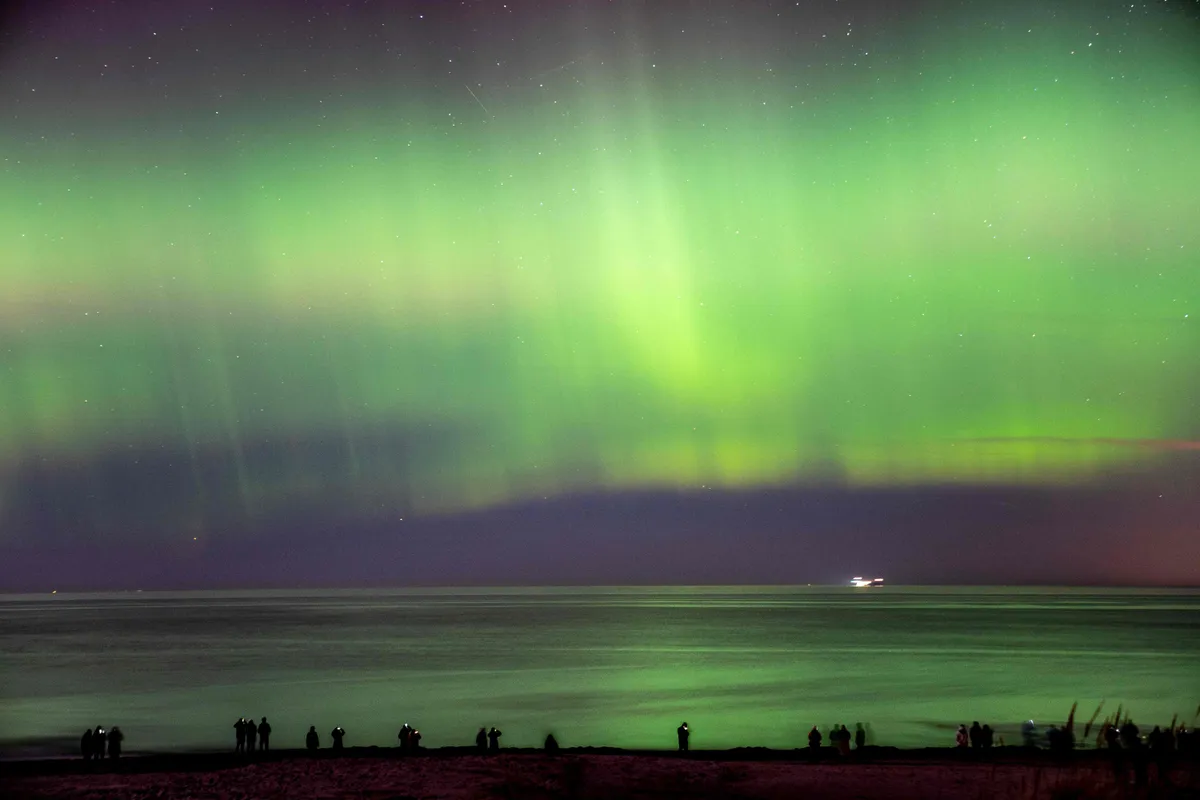
A solar storm will hit the Earth this Wednesday (12th), potentially causing power outages and communication disruptions in Northern Europe. This phenomenon, known as a “cannibal storm,” occurs when multiple solar flares overlap, magnifying their impact on Earth’s magnetic field.
- Also read: Tarsila do Amaral’s collection returns from Europe and is on display at Palacio dos Bandeirantes, SP government headquarters
This Tuesday (11th), a solar explosion of the X5.1 class (one of the most intense) caused radio interference in Europe and Africa, forming an impressive aurora borealis, according to the British press. The British Geological Survey (BGS) said the second wave could make the event the biggest in more than 20 years.
Risks to power grids and communications
The National Oceanic and Atmospheric Administration (NOAA) has confirmed that two coronal mass ejections eight times more powerful than normal have already hit Earth, and a third one is still on the way. NOAA is warning of radio and GPS system failures until this Friday (14th).
The Japan Meteorological Agency classified the phenomenon as a G5 geomagnetic storm, the most extreme level, which could cause damage to transformers and instability of the power grid. “This could be the biggest event of the last 20 years,” said Gemma Richardson of BGS.
Despite the risks, the phenomenon has produced a rare aurora borealis in the UK. Krista Hammond, from the Met Office, said further sightings were possible, but cloudy skies were expected to make viewing difficult, and the chances were higher in northern Scotland.
Northern lights can be seen in the UK sky
England, Scotland, Wales and Northern Ireland were able to witness this phenomenon.
According to NASA, solar flares are intense bursts of radiation caused by the release of magnetic energy from sunspots and are the largest explosive phenomena in the solar system. These eruptions are classified by intensity. Class X is the most powerful, followed by M, C, and B. They can cause interference in communications, but they’re also responsible for the colorful lights that decorate the polar skies.
The interaction between solar particles and the Earth’s magnetic field causes the upper atmosphere to emit light, forming so-called auroras.



